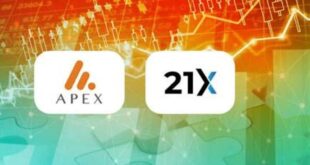The world of crypto lending is evolving rapidly, with centralized giants like Tether, Galaxy, and Ledn still holding strong dominance. However, the decentralized finance (DeFi) sector is making impressive inroads, rapidly expanding its share in the $37 billion crypto lending market.
For years, centralized platforms such as Tether, Galaxy Digital, and Ledn have led the charge in crypto lending, offering users access to various lending products backed by cryptocurrency assets. These platforms typically rely on centralized control, creating a trusted intermediary to facilitate lending, borrowing, and the storage of assets. Tether, with its USDT stablecoin, remains one of the most prominent names in the space, while Galaxy Digital’s presence in both investment and lending services continues to solidify its standing. Ledn, known for its innovative bitcoin-backed loans, has seen impressive growth by appealing to crypto enthusiasts looking for liquidity without liquidating their holdings.
However, as the decentralized finance movement continues to gain traction, it’s reshaping the landscape. DeFi platforms, which operate without central authority or intermediaries, have seen exponential growth. By leveraging smart contracts and decentralized protocols, DeFi platforms are offering lending and borrowing solutions without the traditional risks of centralized control. A growing number of DeFi protocols are now able to offer more competitive interest rates, transparency, and the promise of greater autonomy for users.
The $37 billion crypto lending market is becoming a battleground between these two models. Centralized lenders have the advantage of greater regulatory clarity and a strong reputation among traditional financial markets, helping them attract institutional investors and large-scale capital. On the other hand, DeFi platforms have gained popularity due to their open-source nature, greater yield opportunities, and the ability for users to retain more control over their assets.
The Rise of DeFi in Crypto Lending
Decentralized platforms have captured the attention of crypto enthusiasts who value privacy and the ability to maintain control over their assets. DeFi protocols like Aave, Compound, and MakerDAO are transforming how individuals interact with digital assets. These platforms allow anyone with cryptocurrency to lend, borrow, and earn interest through liquidity pools, with minimal fees and no central authority overseeing transactions.
The growth of DeFi lending has been remarkable. According to data from DeFi Pulse, the total value locked (TVL) in DeFi lending protocols has surged, with billions of dollars now flowing into these platforms. As of the latest figures, more than $13 billion is locked in DeFi lending protocols alone. The yield generation capabilities and fast-growing liquidity pools have been attracting investors eager for higher returns compared to traditional centralized platforms.
Centralized Platforms Holding Strong
Despite the rise of DeFi, centralized platforms like Tether, Galaxy, and Ledn are not backing down. Tether continues to leverage its position as the most widely used stablecoin in the crypto ecosystem to offer lending solutions with robust liquidity, making it a reliable choice for institutional investors and traders who require stability in the volatile crypto market. Similarly, Galaxy Digital has maintained its leadership in the institutional crypto space, offering a range of services, including lending products, tailored to high-net-worth individuals and businesses.
Ledn, on the other hand, has attracted attention for its tailored offerings, such as bitcoin-backed loans that allow users to borrow against their crypto assets without having to sell them. The platform’s success highlights the demand for accessible lending solutions that offer flexibility, liquidity, and security.
The centralization of these platforms often brings perceived benefits such as user support, transparency, and regulatory compliance. These advantages have been particularly attractive to more risk-averse investors and institutions, who value the added layers of protection and oversight that centralized platforms offer.
The Battle for Market Share
As DeFi’s market share grows, centralized platforms are under increasing pressure to adapt. Many are exploring ways to integrate DeFi-like features into their offerings while maintaining their centralized control. Some centralized lending platforms have begun to incorporate decentralized finance solutions into their operations, opening up access to DeFi protocols while still offering the security and customer support associated with centralized services.
Furthermore, regulators around the world are beginning to scrutinize both centralized and decentralized platforms more closely, as concerns around security, transparency, and compliance continue to rise. Centralized platforms are well-positioned to navigate these regulatory waters, thanks to their established legal frameworks. DeFi, however, faces uncertainty, with unclear regulations potentially hindering further growth or pushing innovation to more crypto-friendly jurisdictions.
The Future of Crypto Lending
As we look toward the future, it’s clear that the crypto lending market will continue to evolve. Centralized platforms will likely maintain a strong presence, offering institutional-grade products with the security and support that traditional financial markets demand. However, DeFi is positioning itself as a viable alternative, offering decentralized solutions that appeal to the growing number of crypto users who prioritize autonomy, privacy, and higher yields.
Ultimately, the $37 billion crypto lending market may see a hybrid approach emerge, where both centralized and decentralized platforms coexist and collaborate. For investors and users, the competition between the two could result in even more competitive rates, better services, and a wider range of options.
The battle between centralized and decentralized crypto lending models will continue to define the future of the market, but it’s clear that both sides have their advantages and will likely continue to shape the space for years to come.
 Business Sandesh Indian Newspaper | Articles | Opinion Pieces | Research Studies | Findings & News | Sandesh News
Business Sandesh Indian Newspaper | Articles | Opinion Pieces | Research Studies | Findings & News | Sandesh News



